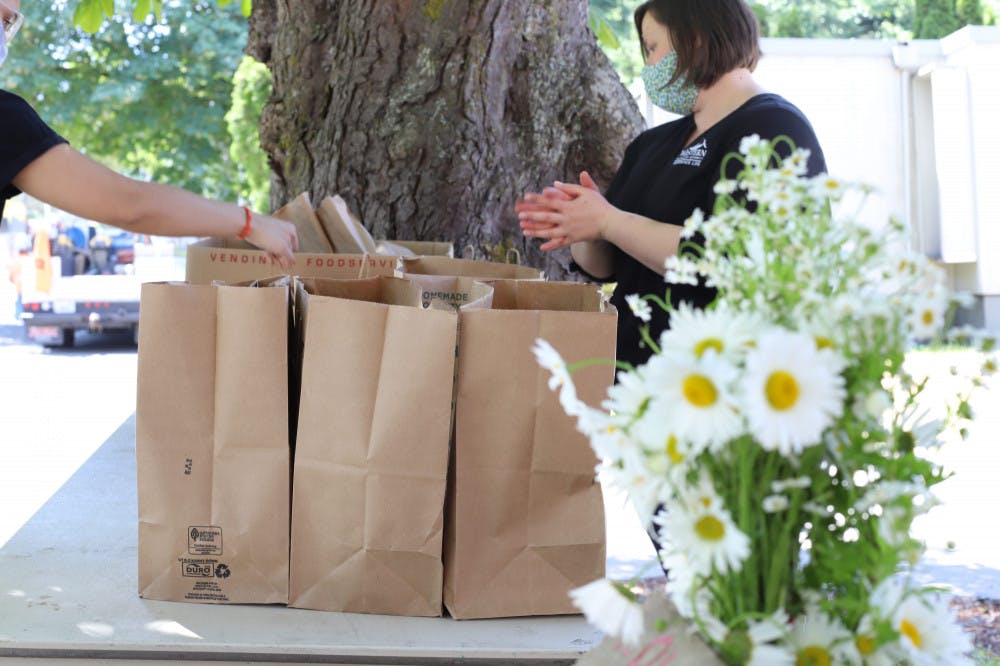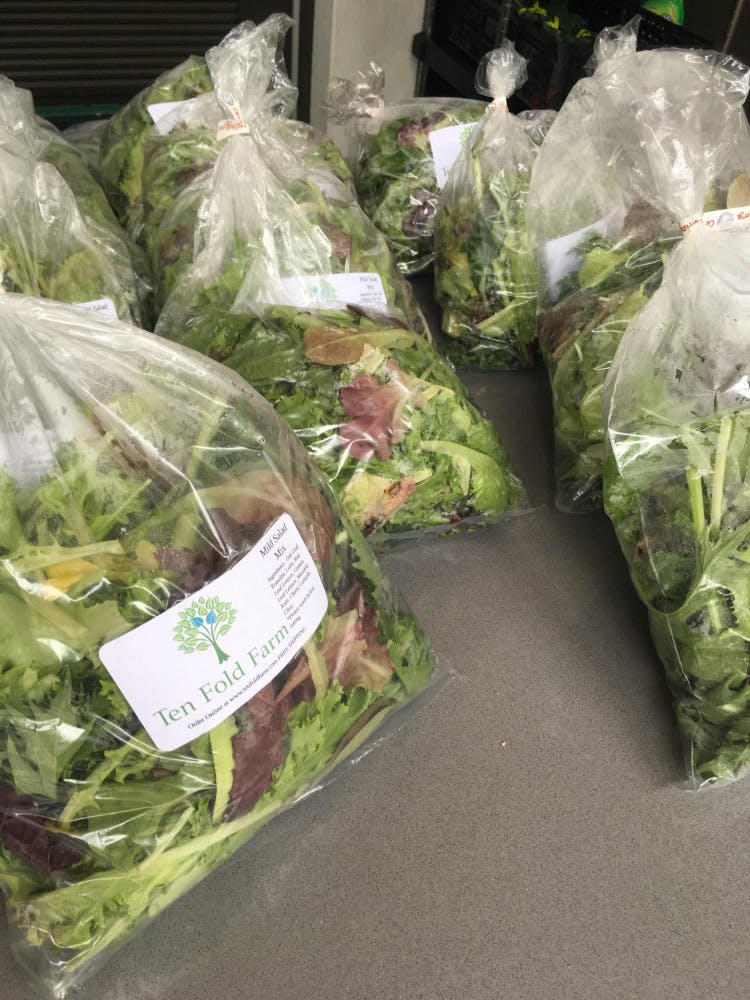As the pandemic continues, educators and advocates worry about accessibility for students experiencing homelessness

The changeover to entirely remote learning created unique challenges for everyone navigating a new learning environment during the global COVID-19 pandemic. However, experts and advocates worry that students experiencing homelessness may be facing deeper inequities.
“Learning – true learning – comes from a holistic perspective,” said Rashida Crutchfield, associate professor of social work at California State University, Long Beach. “We know that all of us are experiencing increases in stress and anxiety related to the pandemic. For a lot of us, with our smartphones and our laptops, there is an assumption that we all have those items at our disposal, but that is not the case. It’s not universal.”
Crutchfield is co-author of the book “Addressing Homelessness and Housing Insecurity in Higher Education.” She was one of the very first to study college students experiencing homelessness and hunger, and said she believes that COVID-19 has a “tidal wave effect” on students already struggling with basic needs.
Jenn Daly, director of development and communication at Northwest Youth Services, said that it is impossible to quantify the experience of homelessness. It is important to recognize that every individual experiencing homelessness has a unique set of challenges and priorities.
“Accessibility to remote learning is something that these students have been struggling with for a long time,” Daly said. “A lot of our systems are created to support a very specific lifestyle, and if you don’t have that lifestyle, the systems fail you.”
Resources such as library workspaces are not open to the public amidst health concerns, which limits some students’ access to technology and Wi-Fi. However, while COVID-19 has made life harder for some students experiencing homelessness, it might not be the biggest challenge others are facing, said Daly.

“Even without the pandemic, there are some students who travel a half an hour to an hour round trip by bus, just to do their homework. This is an unspoken expectation we’ve been putting on these homeless or low income students for a long time,” said Daly. “Equity in education is something that is strived for, but often not attained.”
All Western Washington University classes shifted online as of March 11, after Whatcom County declared its first case of COVID-19. The end of spring quarter and all summer quarter classes have been exclusively online, with plans to hold a mix of online and socially distanced in-person classes fall quarter.
“I do know that the Bellingham Public Library is offering Wi-Fi access remotely from their parking lot, which is interesting and promotes social distancing,” said Rai Hughes-Davies, a recent Western graduate who struggled with food insecurity as an undergraduate. “… Students struggling with food insecurity or homelessness have additional layers that make accessing information harder. Even if they do have technology and Wi-Fi, it doesn’t necessarily mean they will be able to access the information in the same way.”
Hughes-Davies also said that while Academic Technology and User Services currently has systems in place to allow students to check out technology with their Western ID, this presents an issue with mobility, requiring students to travel back and forth to campus to check out and return devices.
Accessibility, coupled with time pressure, has become even harder with COVID-19. A study conducted by Crutchfield shows that students experiencing homelessness tend to work more paid hours than their housed peers.
Crutchfield cited a recent report from the UCLA Labor Center with the Dolores Huerta Labor Institute, which looked at undergraduates in Los Angeles County. The report showed that 78% of students who work are also taking 12 or more credits of classes, while 35% work more than 30 hours per week.
“Students who already have restrictive budgets are that much more impacted,” said Crutchfield. “We are seeing many students’ homeless status get more embedded, or students who were not experiencing housing instability before experiencing it now as a result of wage loss.”
Crutchfield said that the report is not universal, but it is necessary to recognize that while some students are maintaining hours due to essential service work, many are experiencing restricted hours.
“One of the things that stands out most to me regarding homelessness and food insecurity on campus is the accessibility of food stamps,” Hughes-Davies said. “With food stamps, it doesn’t cover a delivery service, so people who are eligible for food stamps are required to go into the high risk areas [of grocery stores] in order to obtain their resources even if they have health concerns or disabilities that make it more dangerous for them to do so.”
Hughes-Davies also noted that the Supplemental Nutrition Assistance Program benefits are only available to U.S. citizens or legal residents who meet income and resource limits.
“There still are students who don’t even have the ability to access food stamps. … When I was at Western, the food pantry was in development. To my knowledge, there are now three locations of food pantries available on campus, two of which do not require a Western ID or ask any questions, which was exciting to learn.”
While Hughes-Davies was a student at Western, no food vendors on campus accepted Electronic Benefit Transfer, the card system used to redeem food assistance benefits.
Crutchfield said helping these students get access to staples like food and Wi-Fi is more important than ever during COVID-19.
“We have a responsibility right now to hold the board of education and our federal government accountable for how we are utilizing funds to help students,” Crutchfield said. “Generally speaking, it is incredibly difficult for students experiencing homelessness to access basic hygienic needs. Students can be quite creative, but [it] can be difficult to access normal hygienic products, and then we add on top the need for [personal protective equipment]. ”
Crutchfield said that many students experiencing homelessness have varied living circumstances, including “couch-surfing,” staying with friends or living in their car. It is hard for those students to practice social distancing or quarantine, she said.
Daly added that, while youth experiencing homelessness from the ages of 13-25 can access showers and washing machines through Northwest Youth Services, laundering reusable masks is likely not at the forefront of their minds.
“For anyone experiencing homelessness, sometimes the last thing on their mind is keeping track of a face covering and making sure it is clean. They’re worried about where they will access the restroom, or their next meal,” said Daly. “We hand out countless amounts of personal protective equipment, and I know [The Lighthouse Mission] does as well, but that is likely not the priority of those experiencing homelessness. They simply do not have the luxury to worry about their health.”
Daly said that many things instituted when the virus was emerging made life harder for people experiencing homelessness. For example, the City of Bellingham closed public restrooms in March.
Crutchfield, Daly and Hughes-Davies all mentioned the need for support networks and community awareness.
“Being a trusting and caring neighbor can go a long way,” Daly said.
_
If you or someone you know is experiencing homelessness or food insecurity in Whatcom County, the following resources below are available to you:
Northwest Youth Services, serving youth ages 13-25.
108 Prospect Street
Bellingham, WA 98225
(360) 734-9862
“The Ground Floor” through Northwest Youth Services
2500 E. Street
Bellingham, WA 98225
(360) 734-9862 Ext. 137
The Lighthouse Mission
910 Holly Street
Bellingham, Wa 98225
(360) 733-5120
Lydia Place
1701 Gladstone Street
Bellingham, WA 98225
(360) 671-7663
Bellingham Food Bank
1824 Ellis Street
Bellingham WA, 98225
(360) 676-0392
Free Food Summer Pop Ups are also available in the Viking Commons from 12 p.m. – 2 p.m. on Thursdays. Masks and student IDs are required.





